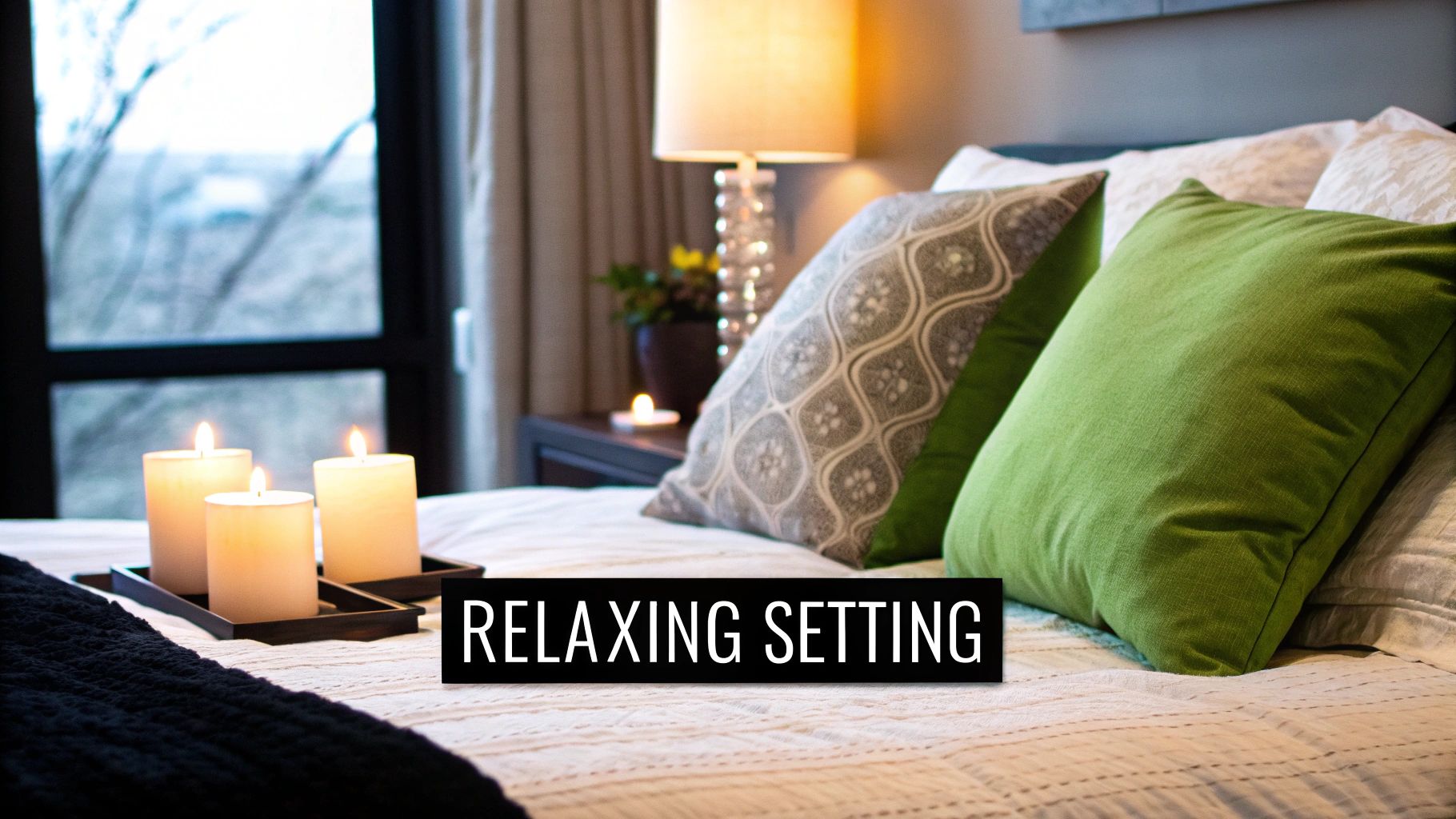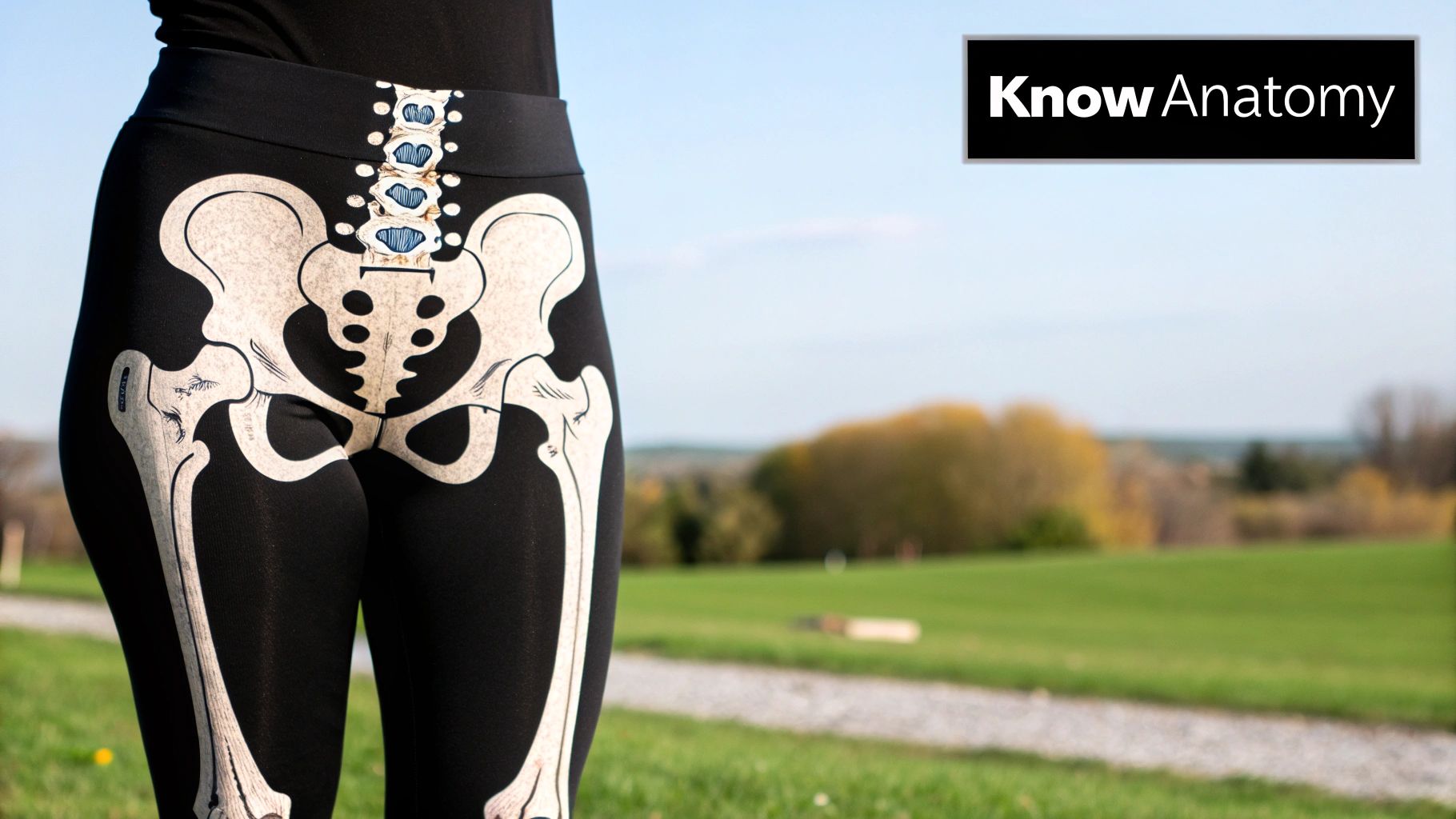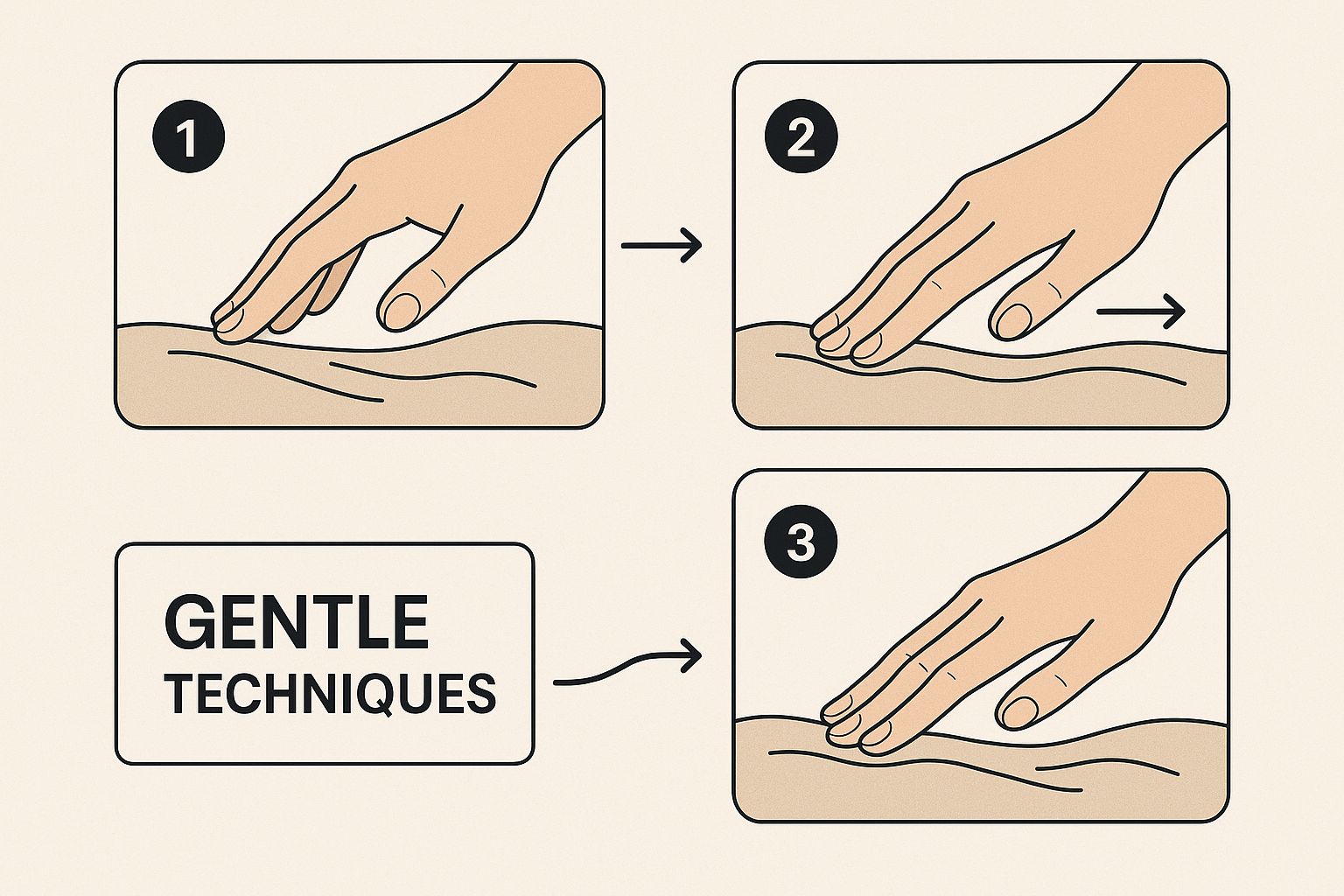The Hidden Benefits Of Vaginal Massage You Should Know
Vaginal massage goes beyond boosting pleasure; it also offers wellness perks that deserve more attention. By focusing on pelvic tension relief, you help muscles unwind and reduce discomfort in daily activities. Enhancing circulation to delicate tissues brings more oxygen and nutrients, supporting overall vaginal health. A brief touch routine can become an effective self-care habit with both immediate and lasting rewards.
Physiological Advantages Of Vaginal Massage
- Enhanced Blood Flow: Regular massage improves local circulation, encouraging tissue repair and resilience.
- Reduced Pelvic Tension: Gentle, sustained pressure relaxes tight muscles and may ease chronic cramping.
- Improved Lubrication Response: Better blood supply often leads to more natural lubrication, making intimacy more comfortable.
These physical gains lay the groundwork for deeper emotional benefits and stronger partner bonds.
Emotional And Relational Benefits
Vaginal massage can heighten body awareness, helping you notice subtle sensations and preferences. Sharing this practice with a partner often builds trust and opens lines of communication. By creating a ritual of consent and exploration, couples establish a safe space where curiosity and connection grow together.
Evidence From Surveys And Studies
Addressing vaginal discomfort is essential for overall well-being. According to the Vaginal Health: Insights, Views & Attitudes Survey, 82% of women experienced vaginal discomfort for a year or more, and 80% said it negatively affected their quality of life. This data shows why learning how to massage a vagina can be an empowering step toward relief.
| Condition | Prevalence (%) | Massage Outcome |
|---|---|---|
| Chronic Vaginal Discomfort | 82 | Improved comfort and reduced tension |
| Quality-of-Life Impact | 80 | Enhanced confidence and relaxation |
Tips For Incorporating Massage Into Your Routine
- Set aside 5–10 minutes in a calm, warm space to explore gentle touch.
- Use a pH-balanced, water-based lubricant to protect delicate tissues.
- Communicate boundaries and preferred pressure with your partner or yourself.
- Begin with external techniques before moving inward, focusing on areas that feel tense.
You might be interested in: How to Master Advanced Techniques for Deeper Connection
Setting The Stage: Creating Your Intimate Sanctuary

Creating a calm setting is the first move when mastering how to massage a vagina. This area should feel like a private refuge—a blend of spa calm and personal comfort. Every sensory detail from air temperature to sound level plays a part in easing tension and opening the body.
In this environment, distractions must be pushed aside. Clear the room of screens and alerts so you can focus on presence before introducing any massage oils or gels.
Temperature And Comfort
Keep the space at 72–75°F to maintain tissue softness and sensitivity.
- Encourages steady blood flow for natural warmth
- Use a soft blanket or a heated pad to reinforce comfort
Ending with this steady warmth ensures the touch that follows feels inviting and relaxed.
Lighting And Ambiance
Choose warm, dim lighting to ease tension and set a calm mood.
- Dimmable lamps or candles create a soft glow
- Avoid bright overhead lights that can feel sterile
A gentle light level encourages intuitive and focused touch.
Sound Selection
Select background audio that soothes rather than distracts.
- Instrumental or nature tracks at 30–40 dB
- Rhythms that match a relaxed breathing pattern
This subtle soundtrack guides attention inward, preparing you both for the massage.
Distraction-Free Zone
Create a space free from interruptions.
- Silence phone and other alerts
- Close curtains or use room dividers
- Reserve a 20–30 minute window for full attention
These steps help maintain focus on the experience and product choices ahead.
Choosing Safe Massage Products
| Product Type | Safety Rating | Notes |
|---|---|---|
| Water-Based Lubricant | 5/5 | pH-balanced, gynecologist-approved |
| Silicone-Based Gel | 4/5 | Long-lasting, hypoallergenic |
| Scented Lotions | 2/5 | May contain irritants, glycerin or parabens |
| Petroleum-Based Oils | 1/5 | High risk of micro-tears and pH imbalance |
This table shows why picking the right product is crucial for tissue health—and leads into the essentials of vaginal anatomy next.
Vaginal Anatomy Essentials: Your Roadmap to Pleasure

Now that you understand how product choice protects delicate tissue, mapping the underlying landscape is the next step in mastering how to massage a vagina. A clear internal roadmap helps you tailor touch to each sensitive area, keeping safety and pleasure in balance.
Consider how the vaginal mucosa lining responds differently to light strokes versus firmer pressure. Inner walls vary in elasticity based on individual anatomy and arousal. Structures like the perineal body and vestibular bulbs offer unique sensations that can intensify or moderate stimulation. Recognizing each tissue type and location broadens your range of responses.
Maintaining vaginal health supports optimal sensitivity. Although massage doesn’t treat infections, conditions such as bacterial vaginosis can impact comfort during touch. Globally, 23–29% of women of reproductive age experience BV, which may increase discharge and discomfort. Staying informed and addressing symptoms early is key for safe, pleasurable practice. Learn more about bacterial vaginosis here
Major Erogenous Zones And Nerve Clusters
Several sites deliver intense nerve stimulation. Key areas rich in nerve endings include:
- Clitoral Glans: External tip near the urethra, densely packed with nerve fibers.
- G-Spot: Anterior vaginal wall about 2–3 inches in, feels like a soft ridge.
- Urethral Sponge: Surrounds the urethra, responds to steady, firm pressure.
- Vestibular Bulbs: Flank the vaginal opening, swell and pulse when aroused.
Conversation and feedback help you adjust pressure, rhythm and depth for each area.
Key Anatomical Structures For Vaginal Massage
Below is a detailed overview of essential structures, their locations and sensitivity levels to guide proper massage technique.
| Anatomical Structure | Location | Sensitivity Level | Massage Considerations |
|---|---|---|---|
| Clitoral Glans | External, near urethra | High | Gentle circles, light flicks |
| G-Spot | 2–3 inches inside, front | Medium–High | “Come-hither” strokes, steady pressure |
| Vestibular Bulbs | Sides of vaginal opening | Medium | Soft squeezes, rhythmic pulses |
| Urethral Sponge | Beneath anterior wall | Medium | Gradual pressure, patient pacing |
| Perineal Body | Between vagina and anus | Low–Medium | Firm, broad strokes for tension relief |
This table highlights where softer or firmer strokes work best, helping you apply precise pressure for safety and pleasure.
With this map in mind, you’re ready to translate knowledge into action. Next, we’ll dive into The Art of Touch, exploring step-by-step techniques that honor these structures and amplify sensation.
The Art of Touch: Your Step-by-Step Massage Guide
Infographic Overview: Step-By-Step Flow
Below is a process flow diagram that visualizes the 5 key stages of the massage sequence, showing how each step connects to the next to maintain comfort and build trust.

From this process flow, we see that a gentle warm-up sets the tone, feedback checkpoints reinforce consent, and each stage readies the body for deeper exploration.
Introducing The Massage Sequence
Once you have a calm setting and a clear sense of anatomy, follow the 5 key stages to learn how to massage a vagina safely and thoughtfully. Each step flows into the next, building relaxation and confidence before deeper focus.
- External Warm-Up: Feather-light strokes on the labia majora and inner thighs
- Perineal Activation: Gentle pressure around the perineum to ease tension
- Clitoral Focus: Circular motions on the clitoral glans to encourage arousal
- Internal Exploration: Gradual insertion with “come-hither” strokes on the anterior wall
- Rhythm & Variation: Adjusting speed, depth, and pressure based on her responses
Starting softly promotes muscle relaxation, and gradual progression ensures comfort while enhancing pleasure.
Detailed Pressure Patterns And Techniques
Skilled practitioners use specific pressure levels to guide arousal. The table below compares pressure levels with their ideal applications:
| Pressure Level | Description | Best Use Case |
|---|---|---|
| Light | Feather-soft touch | Initial warm-up, very sensitive spots |
| Medium | Steady, palm-sized pressure | Perineal activation, vestibular bulbs |
| Firm | Targeted fingertip or knuckle work | Deep internal strokes, G-spot |
This comparison shows how each pressure level can serve a distinct purpose in the massage flow.
Monitoring Response And Maintaining Consent
Observing body cues and asking simple questions keeps the experience consensual and enjoyable.
- Ask “Does this pressure feel comfortable?” after each new move
- Watch for muscle relaxation or tension as nonverbal feedback
- Use “yes”/“no” signals or a safe word for immediate responses
Open communication at every stage lays the groundwork for more advanced techniques and deeper connection.
Beyond Basics: Advanced Techniques for Deeper Connection
Edging Techniques To Amplify Sensation
Building on foundational strokes, edging techniques guide arousal up to the edge of orgasm before easing off. You might apply firm internal pressure for 30–45 seconds and then lighten your touch just as intensity peaks.
Watching for subtle signals—like muscle twitches or changes in breathing—helps you time each pause perfectly. Mastering the pause-and-play rhythm sets the stage for richer experiences.
Combining Pleasure Centers Simultaneously
Combination methods layer stimulation of multiple erogenous zones to trigger wider responses.
- Pair gentle clitoral circles with light G-spot “come-hither” strokes
- Alternate vestibular bulb squeezes with perineal presses
- Synchronize thumb pressure on the urethral sponge with finger pulsing
This approach expands your touch map and often leads to intensities that single-focus techniques can’t achieve. Layering sensations often leads to deeper responses.
Rhythmic Pulsing For Unique Responses
Instead of steady pressure, rhythmic pulsing mimics natural pelvic muscle movement with brief contractions and releases. A quick 2-second squeeze followed by a 1-second rest wakes up nerve clusters in a new way.
Alternating pulse speeds can prevent overstimulation and keep responses fresh. Pulsing can unlock new nerve pathways.
Breathwork Synchronization For Heightened Sensitivity
Aligning stroke timing with breathwork synchronization deepens every touch. Inhale fully as you prepare to press, then exhale during release to promote relaxation.
While massage isn’t a treatment for infections, staying informed about sexual health is crucial. Trichomoniasis saw 156 million new cases in 2020, and the WHO aims to reduce that by 50% by 2030. Discover more insights about trichomoniasis
Breath and safety go hand in hand.
Mindfulness Exercises To Deepen Presence
Practicing mindfulness exercises helps partners stay focused and responsive:
- Body-scan meditation before touch
- Counting breaths in sets of four
- Guided imagery centered on warmth and openness
Staying mentally engaged sharpens feedback and paves the way for targeted tension relief. Staying present sharpens every touch.
Addressing Pelvic Tension Through Targeted Release
Many women hold subtle pelvic floor tightness. Use these targeted moves to ease discomfort:
| Technique | Target Area | Indicator | When To Use |
|---|---|---|---|
| Perineal Hold | Perineum | Gentle give | After 5–10 min warm-up |
| Internal U Pulses | G-Spot/Anterior | Fluttering walls | When anticipation peaks |
| External Compression | Labia Minora | Softening of tissues | To balance deep internal work |
Observing tissue response tells you when to switch methods or pause. Reading tissue response guides your next move.
Explore our guide on How to Master Advanced Techniques for Deeper Connection for more in-depth tips.
Safety First: When and How to Protect Vaginal Health
Understanding how to massage a vagina can increase comfort and pleasure, but it’s vital to safeguard delicate tissue and prevent infection. Following professional guidance helps you spot situations when massage isn’t advised and adopt hygiene steps often overlooked in other tutorials. Proper preparation ensures a safe and comfortable experience for anyone involved.
When To Avoid Vaginal Massage
There are times when gentle touch can do more harm than good, so pause massage practice if any of these apply:
- Active vaginal infections (for example, bacterial vaginosis or yeast)
- Under 6 weeks since an episiotomy or vaginal repair
- Recent pelvic surgery or intrauterine device (IUD) insertion
- High-risk or complicated pregnancy without clearance from a healthcare provider
- Noticeable discomfort, unusual bleeding, or sharp pain
Any of these symptoms should prompt you to stop and seek medical evaluation before resuming touch.
Hygiene Practices And Nail Safety
Even when massage is allowed, meticulous hygiene is essential:
- Wash hands for 20 seconds using a mild, fragrance-free soap
- Keep nails trimmed and filed to avoid micro-tears in the mucosa
- Consider latex-free gloves if there’s a latex allergy or skin sensitivity
- Choose pH-balanced, water-based lubricants matching a vaginal pH of 3.8–4.5
- Steer clear of scented or glycerin-rich formulas that could disturb natural flora
These steps lower the chance of introducing pathogens and help keep tissues healthy.
Safe Vs. Unsafe Lubricants For Vaginal Massage
Comparison of recommended lubricants and those to avoid for vaginal health and safety during massage
| Lubricant Type | Safety Rating | Benefits | Potential Risks | Best Uses |
|---|---|---|---|---|
| Water-Based (pH-Balanced) | 5/5 | Gentle on tissue, preserves flora | Requires regular reapplication | All massage stages |
| Silicone-Based | 4/5 | Long-lasting, hypoallergenic | Difficult to wash off completely | External warm-ups |
| Oil-Based (Coconut/Almond) | 2/5 | Nourishing, softens skin | May alter pH balance, leave residue | Post-healing scar massage |
| Scented or Glycerin-Rich | 1/5 | Pleasant aroma | Can cause irritation, yeast growth | Avoid |
Choosing the right lubricant supports tissue health and enhances comfort during massage.
Recognizing Discomfort Vs. Alarm Signals
Being attentive to body signals is a key part of safe practice. Mild stretching or pressure may feel unusual but is not harmful. However, sharp pain, heavy bleeding, or a foul odor are alarm signals that mean you should stop immediately and seek medical attention.
Read also: How to Master Advanced Techniques for Deeper Connection
Nurturing Connection: Beyond Physical Technique
A vaginal massage can go deeper than physical technique, opening a path to greater emotional closeness. As you master how to massage a vagina, each gentle touch builds trust alongside sensation.
Fostering Open Dialogue
Start by asking permission-based questions to ensure comfort and openness.
- “May I apply a gentler stroke here?”
- “Does this feel right?”
Feedback That Respects
Focus on positive observations and subtle tweaks instead of critiques.
- Highlight what feels pleasurable
- Offer one simple adjustment
Creating A Space For Exploration
A playful, judgment-free atmosphere strengthens emotional rapport.
- Use soft eye contact to connect
- Keep conversation light and sensory
- Pause together for laughter or a shared breath
Communication Frameworks For Introduction
This structure helps guide clear, caring conversations:
| Framework | Purpose | Sample Phrase |
|---|---|---|
| Permission-Based | Builds consent | “May I…?” |
| Reflective Listening | Confirms perception | “I notice…” |
| Comfort Check-Ins | Gauges ease | “How does that feel?” |
Cultivating Neurochemical Bonding
Regular intimate practice prompts release of oxytocin and dopamine, deepening trust and raising body awareness. That fosters emotional safety with every touch. Over time, this simple ritual can help couples rebuild closeness and ease feelings of disconnection.
Ready to strengthen both physical and emotional bonds? Discover more at G-Spot 101
